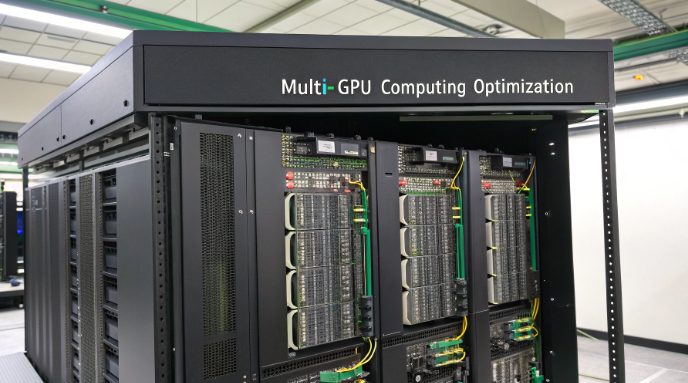Optimize Multi-GPU Efficiency for Maximum Performance

Parallel computing with multi-GPU setups has revolutionized performance across various technical domains, from deep learning to simulations. However, achieving optimal efficiency requires not just high-end GPUs but also precise configurations, optimized algorithms, and streamlined communication. In this guide, we’ll explore advanced techniques to ensure your multi-GPU hosting or colocation environment achieves peak performance.
Understanding Multi-GPU Parallelism
Before diving into the optimizations, it’s crucial to understand what makes multi-GPU systems tick. At its core, multi-GPU parallelism leverages multiple GPUs to divide and conquer complex computational tasks. It typically operates via:
- Data Parallelism: Splits datasets across GPUs, where each one processes a portion of the data.
- Model Parallelism: Divides a single computational model across multiple processors, with each handling specific portions of the computation.
While this division appears simple, inefficiencies can arise due to hardware limitations, communication bottlenecks, and poorly optimized code.
Hardware Considerations for Multi-GPU Efficiency
Hardware selection is the foundation of optimized multi-GPU performance. Without the right infrastructure, even the best algorithms will struggle to perform as expected.
- GPU Interconnects: The communication pathways between GPUs (e.g., PCIe or NVLink) play a critical role in data transfer speed. For bandwidth-intensive tasks, low-latency interconnects are essential.
- Server Compatibility: Ensure the hosting or colocation server supports the required number with sufficient power and cooling infrastructure.
- Memory Allocation: Setups often require larger VRAM for seamless data processing. Plan your workload accordingly.
Optimizing Parallel Algorithms
Algorithm efficiency can make or break multi-GPU performance. Here’s how to get it right:
- Reduce Redundancy: Avoid repetitive calculations across GPUs. Instead, ensure each one calculates only what’s necessary for its task.
- Balance Workload: Divide tasks evenly to prevent underutilization or bottlenecks.
- Leverage Libraries: Use optimized libraries designed for multi-GPU systems. Popular options include libraries for distributed gradient synchronization or optimized data shuffling routines.
Streamlining Communication
Efficient communication is key to minimizing latency and maximizing throughput in multi-GPU environments.
- Asynchronous Transfers: Use asynchronous memory transfers to overlap computations with data transfer, reducing idle time.
- Minimize Data Movement: Reduce the frequency and size of data transfers to minimize latency.
- Optimize Communication Protocols: Use protocols and frameworks designed for high-speed inter-GPU communication, such as ring-reduction algorithms for distributed training.
Monitoring and Benchmarking Performance
To ensure your optimizations are effective, continuous monitoring and benchmarking are essential:
- Monitoring Tools: Tools like performance dashboards can help track the utilization, memory usage, and temperature in real-time.
- Benchmarking: Perform regular benchmarks using dedicated tools to identify bottlenecks and quantify performance improvements.
- Bottleneck Analysis: Pay attention to common bottlenecks such as memory bandwidth, interconnect performance, or CPU-GPU coordination lag.
Common Pitfalls to Avoid
Even with the best intentions, certain mistakes can derail multi-GPU efficiency. Avoid these common pitfalls:
- Overloading GPUs: Assigning more tasks than one can handle leads to inefficiency and overheating.
- Ignoring Communication Overhead: Even powerful processors can be underutilized if data transfer is slow.
- Neglecting Updates: Outdated drivers or software can limit the full potential of yours.
Conclusion
Optimizing multi-GPU efficiency is a complex yet rewarding endeavor. By carefully selecting your hardware, fine-tuning algorithms, and streamlining communication, you can unlock the full potential of parallel computing. Whether you’re working in a hosting or colocation environment, these techniques will help you achieve maximum performance.
Remember, every system is unique. Continuous testing, monitoring, and adaptation are essential to maintaining peak efficiency. If you’re looking to implement or enhance your multi-GPU setup, start by addressing the fundamentals outlined in this guide and expand based on your specific computational needs.

